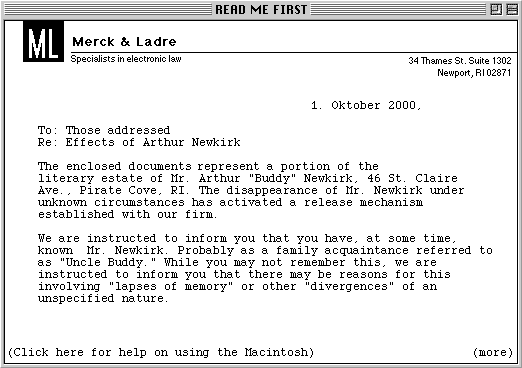Created in 1993, John McDaid’s Uncle Buddy’s Phantom Funhouse may be considered one of the first multimedia/mixed media hypertext novels, as well as one of the first electronic literary artists’ “books.” Readers opening the black box that holds the remains of Uncle Buddy’s estate found––along with five floppy disks––tapes of music, tarot cards, and other items of the titular Uncle Buddy (who may or may not be dead). The story unfolds through these various objects, with the information provided on the floppies as hypercard stacks providing the narrative structure of the work. The novel is inspired by many sources, but those familiar with John Barthes’ “Lost in the Funhouse” will see connections to Uncle Buddy’s house described in the Home card.
One only needs to think back to the technological realities of 1993 when the work was published to understand that makes Uncle Buddy such a compelling work to study as multimedia. Predating the introduction of browsers by several years and the ability to deliver media-rich content by several more, McDaid’s novel pushes against these constraints by including sound as an external media source. The inclusion of tarot cards and other objects found in the box mixes analogue with the digital giving rise to a mixed media environment, heightened by the sense of touch. Anyone who has ever gone through the personal effects of a late relative recognizes the power that interacting with such objects holds.
John McDaid will come to WSUV to participate in the second Pathfinder’s traversal on Thursday, August 8 from 10:00 a.m. to 3:00 p.m. That evening he will be giving a public lecture at the Vancouver Community Library at 7:00 p.m. For more information, contact Dene Grigar at dgrigar@mac.com.




